Phu Quoc Prison stands as one of the historical sites closely associated with the heroic history of Vietnam during the resistance against foreign invaders. When visiting Phu Quoc Prison, tourists have the opportunity to learn about the pain and sacrifices of our ancestors, gaining a profound understanding of the patriotism and indomitable spirit of the Vietnamese people. Join Corona Resort & Casino in exploring more about Phu Quoc Prison in the following article!
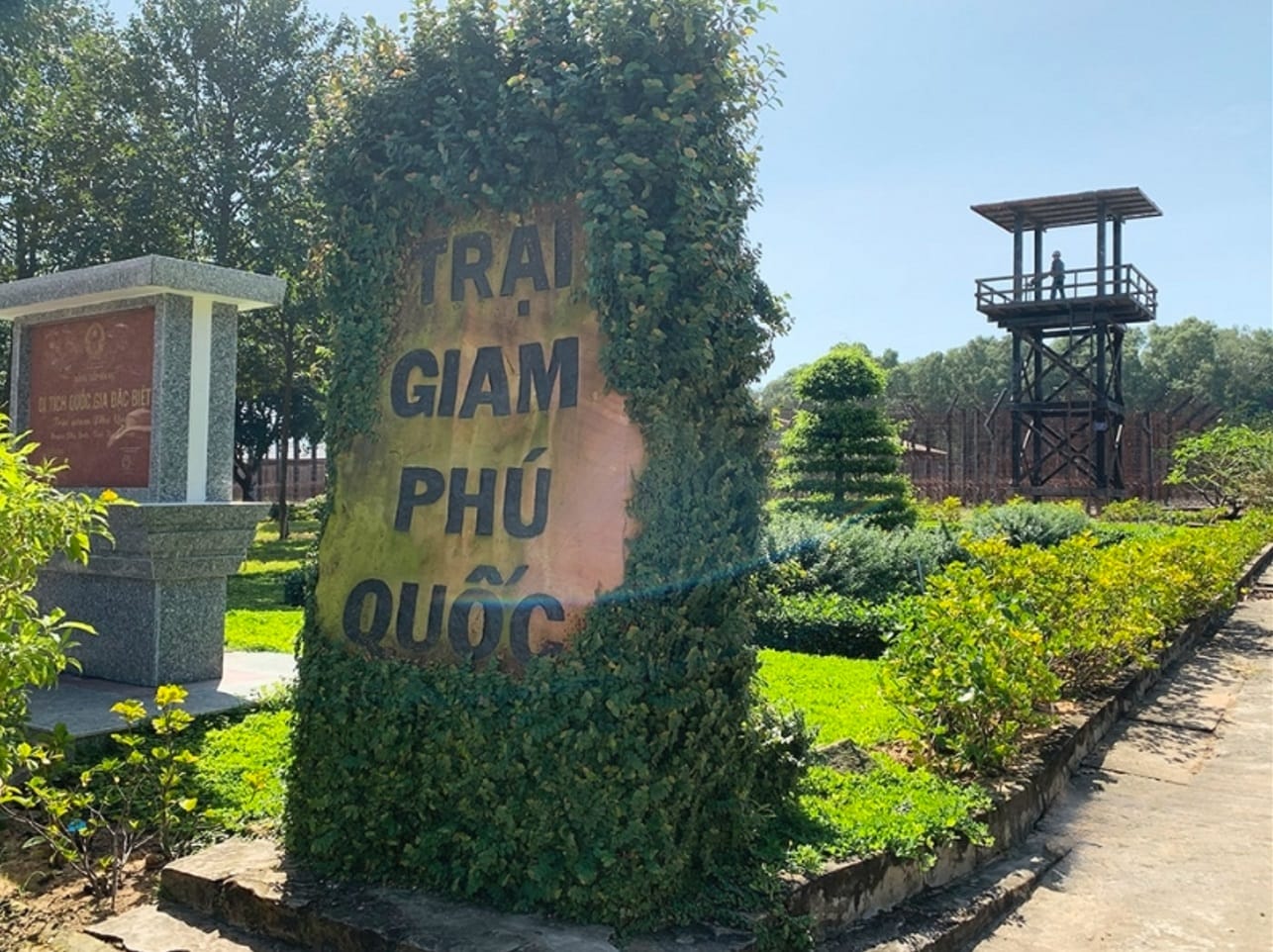
1. Overview of Phu Quoc Prison
Phu Quoc Prison, also known as the Phu Quoc War Prison Camp, is located at 350 Nguyen Van Cu Street, An Thoi Ward, approximately 28 km from the center of Duong Dong, Phu Quoc.
During the Indochina War (1946 – 1954), the prison was originally named Coconut Jail and was built in 1946. It housed around 40,000 prisoners, many of whom were resilient revolutionary soldiers. In 1995, the Ministry of Culture and Information recognized Phu Quoc Prison as a special national historical site. Since then, it has been open to domestic and international visitors interested in understanding its history.
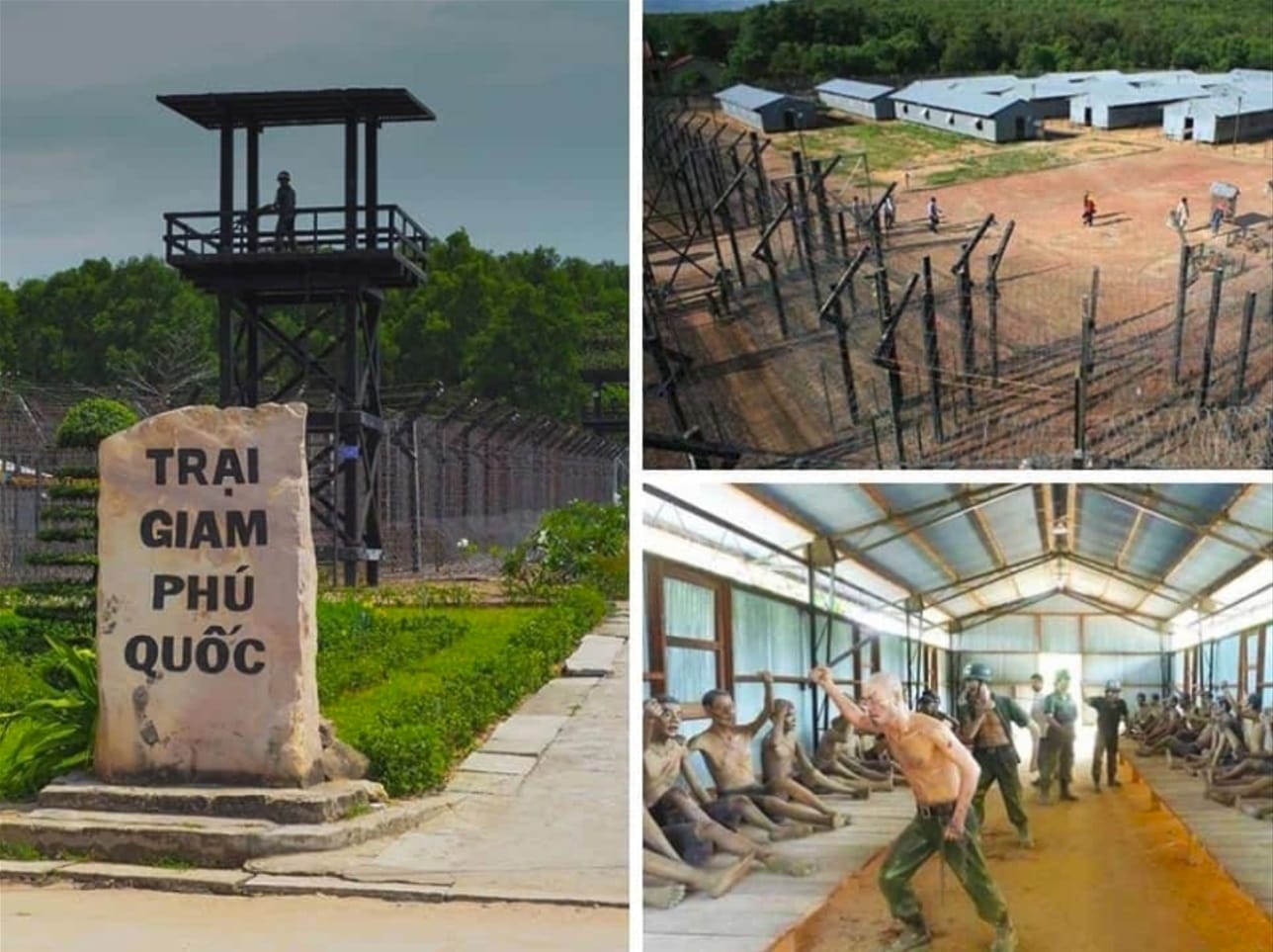
The site spans over 40 hectares and is divided into four zones: A, B, C, and D. These include areas for detention, torture, underground shelters, memorials, and numerous valuable historical artifacts. The prison vividly recounts the stories of wartime atrocities and the brutalities inflicted during the French colonial and American-Vietnamese National Army regimes.
2. Ticket prices, opening hours, and how to get to Phu Quoc Prison
- Opening Hours: 8:00 AM – 11:30 AM and 1:30 PM – 5:00 PM
- Admission Fee: Free
- Address: 350 Nguyen Van Cu, An Thoi Commune, Phu Quoc District, An Giang Province
- Main transportation options from Duong Dong Center to Phu Quoc Prison:
- Motorbike: Depart from Duong Dong Town, follow Tran Hung Dao Street south, then turn left onto Nguyen Van Cu Street. Continue to go straight for about 25 km; Phu Quoc Prison will be on your left.
- Taxi: You can hail a taxi on the street or call reputable companies like Vinasun or Mai Linh. The fare ranges from approximately 150,000 to 200,000 VND.
- Bus: You can take bus route number 10 from Duong Dong center to Phu Quoc Prison. The bus fare is 15,000 VND per trip, but it operates only during certain hours of the day, so be sure to check the schedule.
3. Best Time to Explore Phu Quoc Prison?
The ideal time to visit Phu Quoc Prison is from November to June of the following year. During this period, Phu Quoc experiences dry weather with pleasant temperatures and minimal rainfall, making it perfect for outdoor exploration without the worry of sudden showers, ensuring a comfortable visit.
Conversely, it’s advisable to avoid visiting in August and September, as this is the peak rainy season in Phu Quoc, with average temperatures around 28°C and humidity levels reaching up to 85%. The wet weather and heavy rainfall may disrupt your tour, diminishing the overall experience.
4. Highlights When Visiting Phu Quoc Prison
4.1. Witness the brutal torture reenactments in Zone B2
Zone B2 of Phu Quoc Prison covers an area of over 17,000 square meters and is currently being reconstructed. This section is particularly noteworthy as it vividly reenacts some of the most brutal torture scenes, including barbed-wire cages, hammer and chisel torture, and long nails driven into prisoners’ bodies.
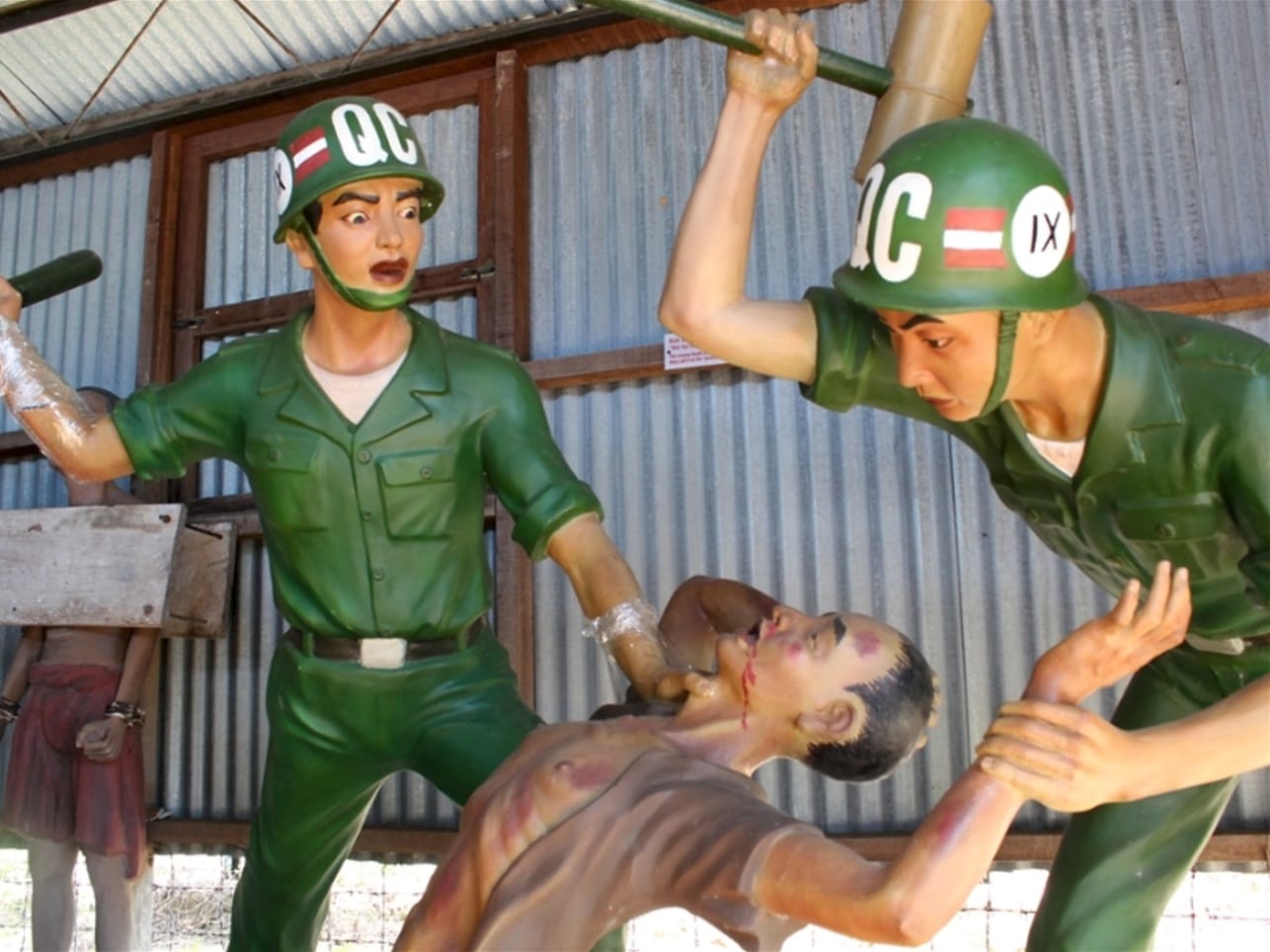
Upon entering Zone B2, visitors can feel the suffering endured by the prisoners. The atmosphere evokes deep emotions, gratitude, and sorrow for those who sacrificed their lives for national independence.
4.2 Visiting the Phu Quoc Prisoned Martyrs Memorial
After witnessing the painful history, don’t forget to visit the memorial to pay your respects to over 500 soldiers who perished here due to horrific torture methods.
Built in 2013, the memorial spans 12,420 square meters and features unique architecture. Designed with two waves rising 5 meters high, the central structure is a hollow pyramid approximately 2 meters deep, symbolizing “The People Who Emerged from That Place,” representing the resilient and indomitable spirit of our nation.
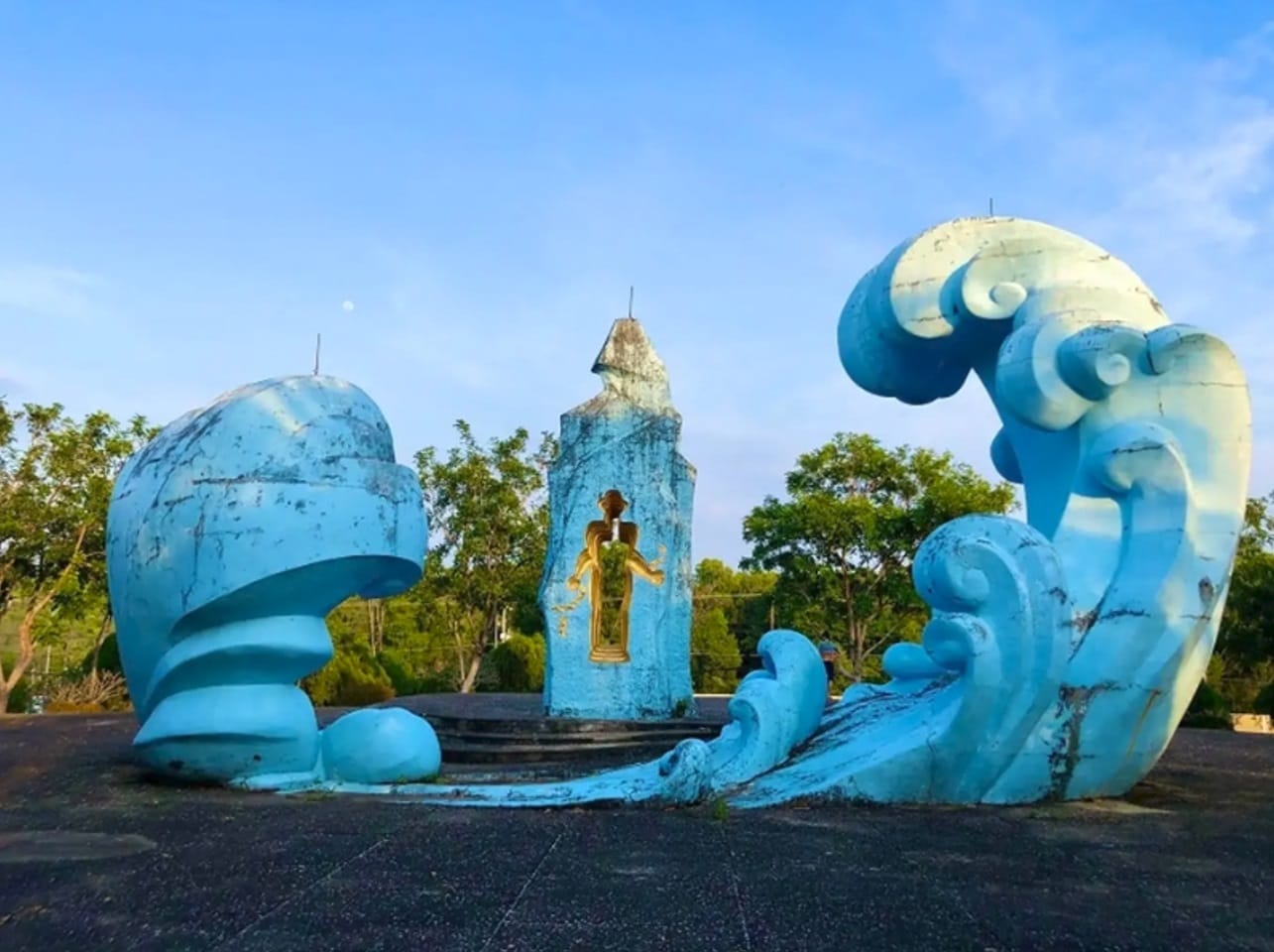
4.3. Understanding the Torture Methods of the American Empire
The solitary confinement rooms at Phu Quoc Prison are some of the most haunting locations for many revolutionary fighters. Here, colonial authorities employed over 40 cruel torture methods on the prisoners, which have been reconstructed in a strikingly realistic manner.
- Barbed Wire Cages: Prisoners were confined in cages measuring just 2 meters long and 0.5 meters wide, surrounded by barbed wire, rendering them immobile. They were forced to lie on the ground, stripped of their clothes, and starved for days. This is considered one of the most barbaric forms of torture at the prison.
- Nail Insertion: To break the will of the prisoners, nails ranging from 3 to 8 centimeters long were driven into various parts of their bodies, including the arms, knees, ankles, shoulders, and head.
- Tooth Extraction: Prisoners were tied in a kneeling position on the ground. Guards would place an iron rod against a tooth and strike the other end with a hammer, causing the tooth to shatter.
- Stingray Whipping: Prisoners were stripped and tied to a wall. Guards used dried stingray tails to lash their bodies, tearing flesh and drawing blood. This method exemplifies the brutal and inhumane practices of the colonial authorities against revolutionary fighters.
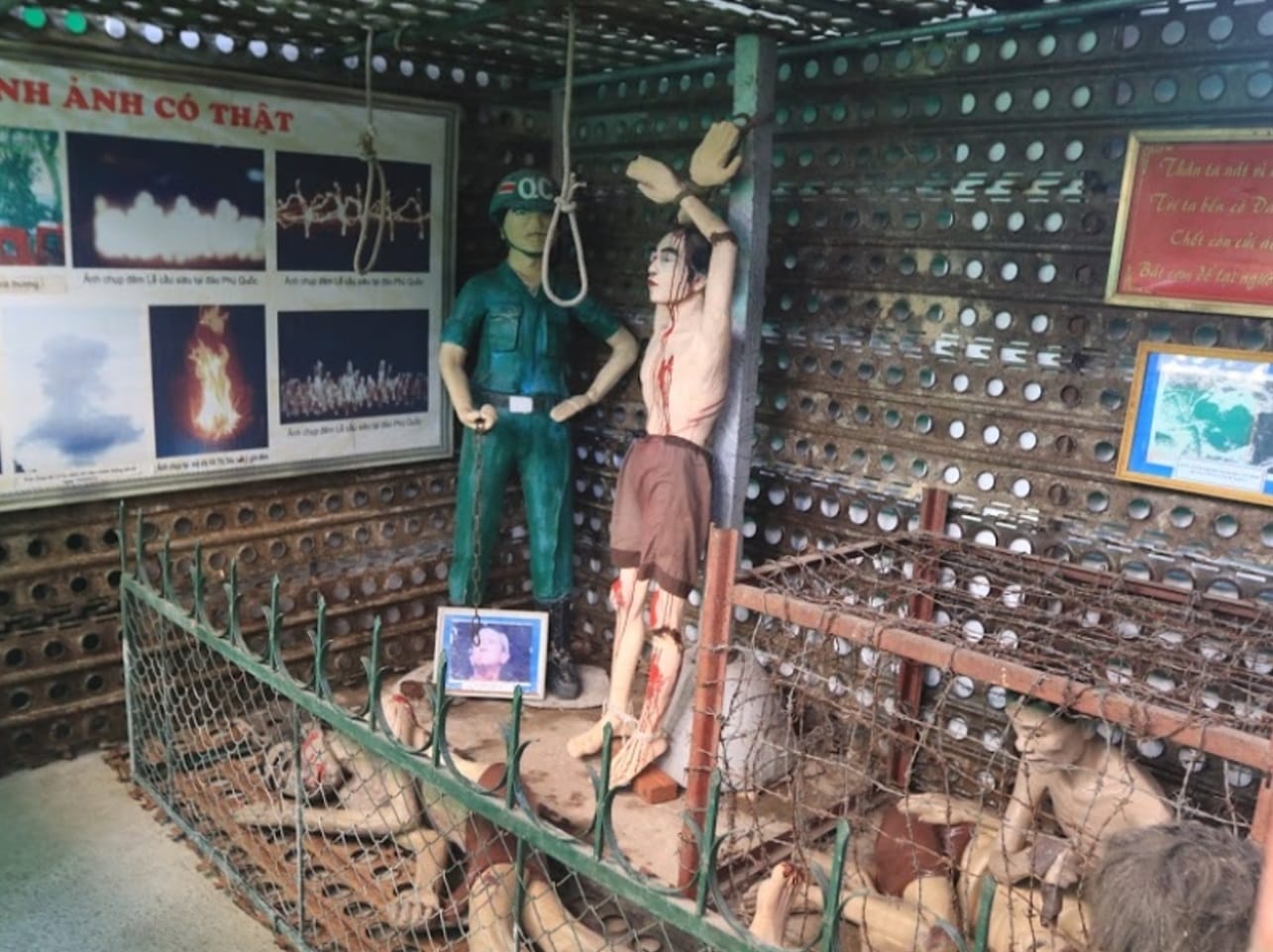
In addition, Phu Quoc Prison has reconstructed many other horrific torture methods, such as submerging heads in water barrels, boiling prisoners alive, burning mouths and genitalia, and burying individuals alive.
5. Important Notes for Visiting Phu Quoc Prison
Phu Quoc Prison is a solemn and respectful historical site; therefore, visitors should keep the following important points in mind:
- Dress Appropriately: Wear respectful clothing and avoid anything inappropriate. Maintain a calm demeanor to show respect for the historical site, minimizing disturbances to others.
- Do Not Touch Exhibits: Avoid touching or damaging any artifacts or items displayed at the prison.
- Food and Drink: You may bring snacks and beverages, but be sure to dispose of trash properly to maintain the site’s cleanliness.
- Outdoor Visits: For outdoor tours, apply sunscreen, wear a jacket, and bring sunglasses. If visiting during the rainy season, consider bringing an umbrella or raincoat for convenience.
- Not Suitable for Children: This site may not be appropriate for children due to the violent images and themes of torture present.
- Guided Tours: Visitors can opt for guided tours that provide detailed descriptions and narratives about the prison’s history for a more informative experience.
- Photography Rules: Be mindful of areas where photography is allowed and not allowed within the prison.
- Duration of Visit: About 1 to 2 hours exploring and learning about Phu Quoc Prison.
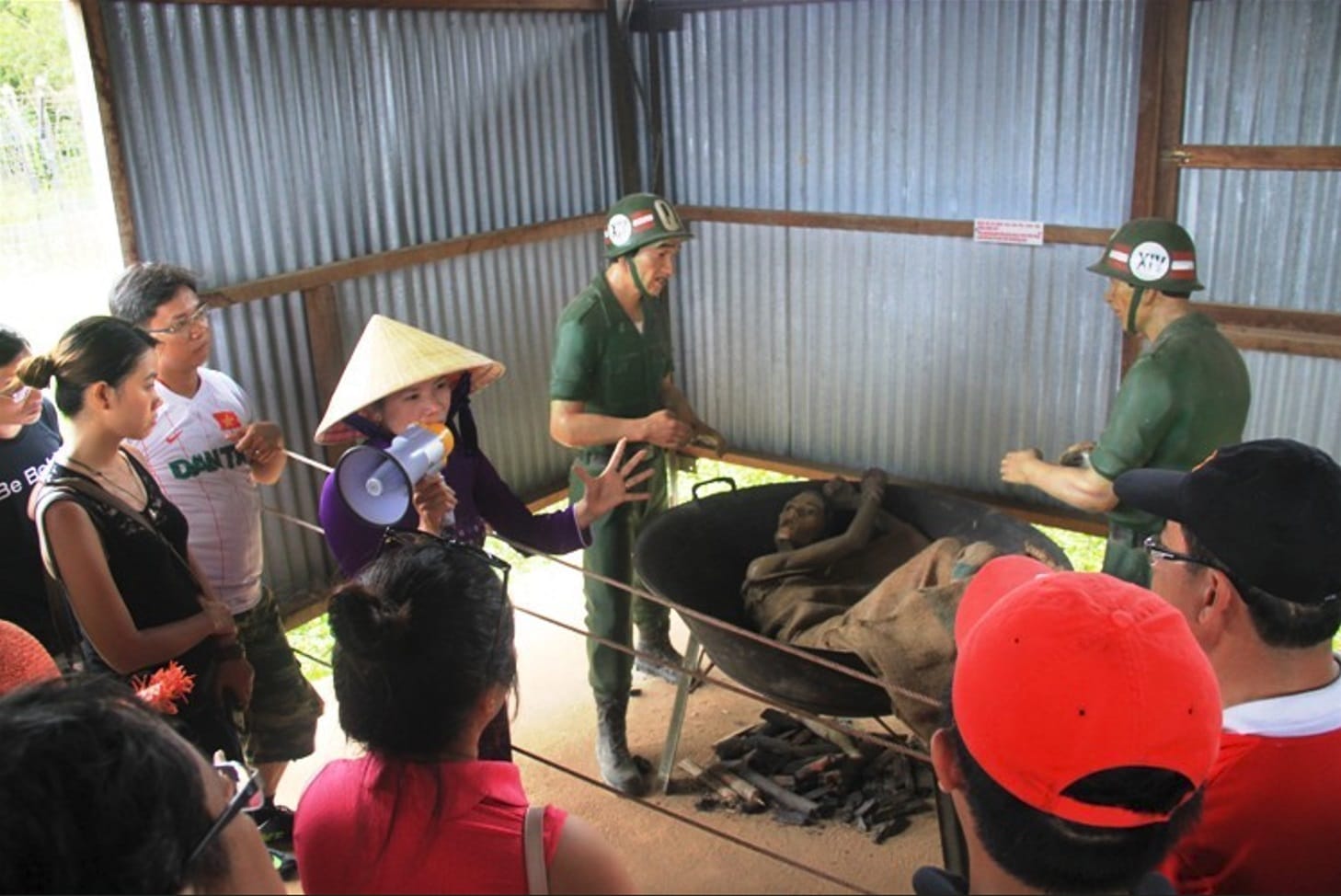
Currently, Phu Quoc Prison stands as one of the intriguing destinations where visitors can delve into the painful yet heroic national history while appreciating the unique architecture of the prison. Corona Resort & Casino hopes you will have an unforgettable experience here, honoring the sacrifices of those who fought for national liberation.
